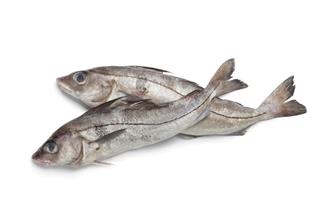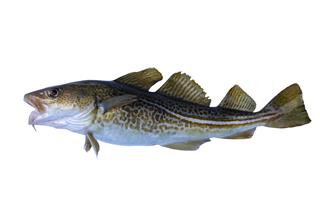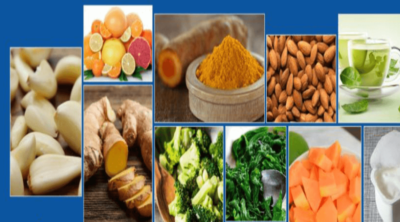
Mistaking a cod fish for a haddock and vice versa is fairly common. This NutriNeat article describes how they differ in appearance, taste, mercury content, and nutritional value.
Did You Know?
Antifreeze proteins (AFP) and glycerol produced by cod and haddock allow them to remain in coastal waters and avoid freezing.
The genus Gadus is commonly known as cod. It contains demersal fish (fish that live and feed on or near the bottom of seas or lakes) belonging to the family Gadidae (as there are exceptions to the rule, some species belonging to the genus Gadus are not called cod, for example, the Alaska Pollock). Haddock, being a member of the cod family ‘Gadidae’, looks like a cod fish. Haddock belongs to the genus Melanogrammus. The name ‘cod’ also refers to some other fish species. In this article, we are comparing two species, keeping in mind the Atlantic cod (Gadus morhua) and the haddock (Melanogrammus aeglefinus).
Both cod and haddock are cold-water fish. The fishing grounds for cod are far from population centers, more towards north (near northern countries Norway and Finland). Young Atlantic cod or haddock prepared in strips for cooking is called scrod cod fish and scrod haddock respectively. Both cod and haddock are used as ingredients in various popular dishes (for example, British ‘fish and chips’ and Norwegian ‘fishballs’). They are interchangeable in many recipes. Although they both look similar, they have a number of differences. The following table will help you understand how the distinction can be done with just a couple of minutes of observation.
Appearance
| Haddock | Cod |
| Size and Weight | |
| A fully-grown haddock is usually smaller and slimmer than a fully-grown cod. A haddock can weigh up to 37 (usually 1 to 5) pounds. The maximum total length can be 112 cm (usually 35 to 58 cm). A one-year old haddock can be about 13-18 inches long. Males attain maturity at 4 years and females at 5 years. They can be about 37 to 58 cm long at that age. The growth rate varies considerably with regions. | It is generally larger than a haddock. Its average weight is 5-12 kilograms (11-26 lb), but a cod weighing up to 100 kg (220 lb) has been recorded. A one-year old cod can be about 26 cm long. Median age at sexual maturity is 1.7 – 2.3 years, at lengths between 32 and 41 cm. They can grow to lengths of 130 cm. |
| Color | |
| They are black and gray. | They have greenish brown skin. |
| Skin Pattern | |
| They don’t have speckled skin, but they have an easily noticeable dark blotch (often called “thumbprint” or “Devil’s thumbprint” or “St. Peter’s mark”) above the pectoral fin. Their scales are scarcely visible through the mucus with which the skin is coated. | They have dots all over their body. |
| Lateral Line | |
| A black line runs from head to tail. | They have a white, pale lateral line. |
Other Differences
| Haddock | Cod |
| Taste and Flavor | |
| Haddock is slightly less white, but more flavorful than a cod. Fillets are thinner and flatter. However, haddock loin is a thicker portion. Fillets are generally softer and more fragile than cod fillets. It cooks quickly. It is usually breaded and pan-fried. Battering and deep-frying is also possible. | Cod fillet tends to be thicker and firmer. As the fillets are thick, they can be grilled, broiled, or pan-seared. To avoid dryness, they need to be oiled before grilling or broiling. Cod has a stronger fish flavor and aftertaste. |
| Characteristic Properties | |
| Usually, they are uniform in color, but some haddocks have 1-4 dark transverse bars or splotches in addition to the black shoulder blotch. | The Atlantic cod can change color at certain water depths. It may appear gray-green or reddish brown. Pacific cod are smaller than Atlantic cod, and are darker in color. |
| Lifespan | |
| The average life expectancy of a haddock is about 14 years. They may live up to 20 years. | An Atlantic cod attains the age of 20 years. |
| Fecundity | |
| Larger females can produce up to 3 million eggs each year. Spawning takes place in typically marine waters (35% salinity) between 50-150 m in depth. | A large female may produce 3-9 million eggs. Spawning occurs near the bottom, usually in water temperatures between 41-44.7 degrees F. |
| Migration | |
| Adult haddocks do not usually migrate. The younger fish undertake extensive migrations. Seasonal movements have been noticed across all ages. | Regular migratory patterns, associated with reproduction and seasonal temperature change, have been noticed in some species. |
| Preservation Method | |
| Because of their delicate texture, haddock do not salt well. They are often preserved by drying and smoking. Lightly brined and smoked haddock is quite flavorful. | Cod can be salted and dried. It can be smoked as well. |
| Health Benefits | |
| Like cod, they are a good source of protein, vitamins, and minerals. | Cod liver oil made from cod livers is loaded with vitamins A, D, and E, and omega-3 fatty acids (EPA and DHA). It is used to treat vitamin deficiencies. The livers are also canned and eaten. |
| Mercury Contamination | |
| Haddocks belong to the class of ‘fish with least mercury’ (mercury less than 0.09 parts per million). | Cod belong to the class of ‘fish with moderate mercury’ (from 0.09 to 0.29 parts per million). |
Comparison of Nutritional Value
| Haddock, Cooked, dry heat, 100 g | Atlantic Cod, Cooked, dry heat, 100 g |
| Calories | |
| 90 kcal | 105 kcal |
| Protein | |
| 19.99 g | 22.83 g |
| Total Lipid (fat) | |
| 0.55 g | 0.86 g |
| Calcium | |
| 14 mg | 14 mg |
| Iron | |
| 0.21 mg | 0.49 mg |
| Magnecium | |
| 26 mg | 42 mg |
| Phosphorous | |
| 278 mg | 138 mg |
| Potassium | |
| 351 mg | 244 mg |
| Sodium | |
| 261 mg | 78 mg |
| Zinc | |
| 0.40 mg | 0.58 mg |
| Thiamin | |
| 0.023 mg | 0.088 mg |
| Riboflavin | |
| 0.069 mg | 0.079 mg |
| Niacin | |
| 4.119 mg | 2.513 mg |
| Vitamin B6 | |
| 0.327 mg | 0.283 mg |
| Vitamin B12 | |
| 2.13 µg | 1.05 µg |
| Vitamin A, RAE | |
| 21 µg | 14 µg |
| Vitamin A, IU | |
| 62 IU | 47 IU |
| Vitamin D (D2+D3) | |
| 0.6 µg | 1.2 µg |
| Vitamin D, IU | |
| 23 IU | 46 IU |
| Vitamin E, (alpha-tocopherol) | |
| 0.55 mg | 0.81 mg |
| Vitamin K (phylloquinone) | |
| 0.1 µg | 0.1 µg |
| Fatty acids, total saturated | |
| 0.111 g | 0.168 g |
| Fatty acids, total Monounsaturated | |
| 0.074 g | 0.124 g |
| Fatty acids, total Polyunsaturated | |
| 0.204 g | 0.292 g |
| Cholesterol | |
| 66 mg | 55 mg |
Source: USDA
Despite these differences, both cod and haddock are popular for their flavor and taste. Those who are fond of eating fish can detect these differences and they know what they like.


